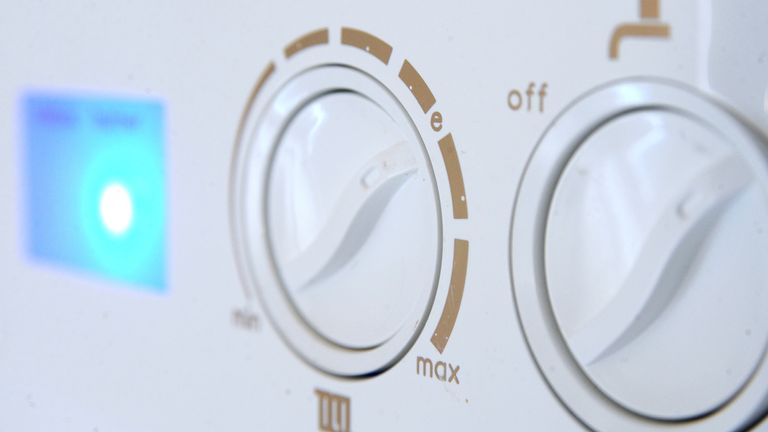Households could be locked into six-month energy deals under proposals by Ofgem to shake up the price cap which protects millions of consumers – but which has also been blamed for the collapse of dozens of suppliers.
The deals, similar to fixed-term mortgages, would see users pay a tariff set by the regulator in the month their contract starts and be subject to exit fees if they leave early.
It is one of three proposed alternatives set out by Ofgem as it launches a consultation on changing the system that has left energy firms vulnerable, with many caught out by surging wholesale energy prices.
1:57 ‘We should not have seen a third of all suppliers failing’The regulator underlined the urgency of the shake-up at a time when markets are still volatile – with gas prices this week climbing close to record highs previously seen in October.
The idea of fixed deals is already popular with many households, who have over recent years opted to lock in energy bills, typically over a one-year contract.
AdvertisementBut Ofgem’s energy price cap was designed to protect those who remained on so-called standard variable tariffs (SVTs) – once seen as rip-off deals that took advantage of those who were not savvy enough to seek out the best prices elsewhere.
A switched to fixed-term deals could affect the 15 million households currently on these SVTs, locking them in to contracts where, unlike at present, they would face an exit penalty.
More from BusinessThe idea would be to protect both consumers and suppliers from price volatility.
Currently the price cap is set every six months and designed to pass on savings to consumers when wholesale gas prices fall but allow suppliers to put up tariffs so they can still operate sustainably when those costs rise.
1:56 Why the energy price cap is ‘failing’ the UKBut there is a big lag between when they are set and when they apply.
The current price cap was announced in August to take effect in October and will last until April.
Since it was set, a surge in energy prices has sent more than 20 suppliers, most of them smaller operators, to the wall – affecting four million customers.
Those which failed to “hedge” – a form of insurance against price spikes – have been especially vulnerable but the regulator said that at times of volatility well-managed companies could also be left facing losses.
Without reform, it said, there was a risk of “further supplier failures and exits”.
Ofgem launched an initial consultation on changes to the energy cap in October.
One of the solutions it has now set out would be to allow the price cap to be reviewed before the end of the six-month period if circumstances trigger a “circuit breaker”.
Another could see the cap updated every three months instead of six months.
2:33 Bulb goes into administrationIn any of the three cases it may move the date at which it sets the cap closer to the time at which it starts to apply.
The consultation proposals were set out alongside a raft of new measures announced by Ofgem to boost financial resilience in the energy sector.
They include stress testing for suppliers which will take effect from January and the strengthening of existing “fit and proper” requirements for energy company executives.
The regulator will also consult on a requirement for smaller suppliers to pause any expansion plans until the regulator is “satisfied that they are financially resilient before they grow beyond certain milestones such as 50,000 and 200,000 customers”.
Chief executive Jonathan Brearley said: “Ofgem has worked hard to protect consumers as gas prices have risen by over 500% in under a year.
“It is vitally important to note that the volatility in the gas market is not over, and we are continuing to see significant shifts in the market.”
